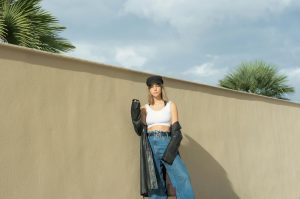There’s a unique love and passion that arises from beautiful art, detailed imagery, and expansive landscapes on canvas. If we also account for the rise of the NFT Crypto Art market, this only further supports the growing love for art worldwide.
As a result, budding opportunities for artists are showing up everywhere, from the digital canvas, oil paintings to turning your masterpiece into a token; you’ll find no end to express and share your talents and skills.
However, beyond brushing up on your technical skills and fundamentals for your chosen art form, we firmly believe that artists should also take the opportunity to learn from different applications and expressions. And if there’s one accessible yet often overlooked technique that we would recommend everyone try, then that would be exploring the beauty and insights of photorealistic drawing through pencil art.
What’s In It For You?
Like most artists, your first encounter with artistic expressions and designs are often related to a pencil and sketchbook, or maybe even those first doodles and scribbles you thought were creative and inspiring on your notebooks. And through the years, you’ve managed to shape and mold your art niche, transforming into the artist you are today. However, that’s what makes photorealistic drawing through pencil art all the more important because you’re reconnecting with your roots and associating the skills you’ve learned from the start until now.
- Sense Of Touch And Control: Firstly, one of the benefits of exploring photorealistic drawing through hand-drawn sketches is the sense of touch and control you get from using pencil and paper. And especially for those who’ve become so engrossed with using the paintbrush or sketching on their tablets, the feedback of feeling the surface with your hand pressed against the paper is a humbling experience. In fact, you might even go through revelations of your art skills translating from one form to the next!
- Interpreting Reality As You See Fit: In addition to the benefit of feeling your canvas and having full control over your subject, there’s a certain magic to interpreting reality as you see fit and recreating your chosen references. And if you’re able to faithfully render the piece, landscape, or object in front of you, nothing quite compares to the fleeting satisfaction of completion. Plus, even though photorealistic drawings emphasize the features of realism, many of the principles learned also reinforce more abstract applications and understandings as well.
Of Course, Proper Execution Will Take Practice
Likewise, no matter how beautiful and expressive we’ve made photorealistic drawing through pencil art sound, it’s not something you can simply jump into and execute flawlessly without proper practice. And much like any art form, you will need to dedicate time and effort in learning the craft so that it can repay that gratitude through other skills as well. Namely, we recommend (1) working with grades to better understand shading, (2) balancing your tones in different details, and (3) experimenting with watercolor over your sketches.
#1 Work With Grids To Improve Shading
When dealing with artistic expressions that dwell on realism, an emphasis on proportion and depth is non-negotiable because these two aspects incorporate reality into your art piece. Therefore, it is in your best interests to work with grids to improve your shading because this will help line up the focus, corners, and endpoints that connect a subject. And much like how expert jewelry photo-editing services create natural shadows for their products, grids will highlight and define the squares for different lighting and reflection.
#2 Balance Your Tones And Details
Another important aspect to remember when creating photorealistic drawings with pencil and paper is the concept of balancing your tones alongside the details of your subject. Far too often do we see newbie artists failing to establish the value range in their pieces, and while it doesn’t break the subject, it does hold back from its true potential. So, guarantee that you’re making use of crosshatching and contoured lines to define the darkest darks and lighter hues that match with each square on your grid.
#3 Try Adding Watercolor Over Your Sketches

Last but not least, once you’ve finished up the final sketch and gone through erasing the grid itself, we recommend that you experiment with color and vibrancy by adding watercolor over your photorealistic pencil sketches. You see, the challenge here is that the texture of graphite can be exceptionally tricky to mix and blend, which makes the final result look murky. However, once you get the hang of things, it helps bring the final art piece come to life and teaches you about careful control when dealing with other artistic expressions.
What You Learn Today Can Help You Tomorrow.
Overall, while you can manage to improve and grow as an artist by sticking with your current craft and niche, we think there’s a lot you’re missing out on by not trying other expressions as well. And even though it will take even more time and effort to see the fruits of your hard work, what you invest and learn today will inevitably help you in your future art endeavors and possibly a spot in Cheech Marin’s art center.




